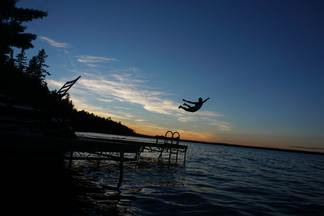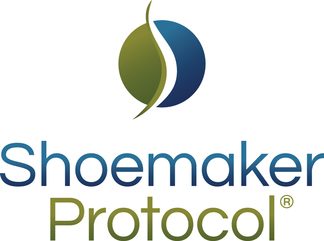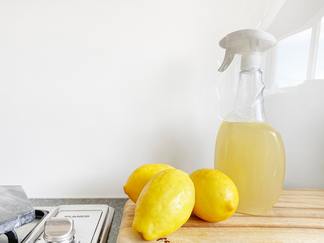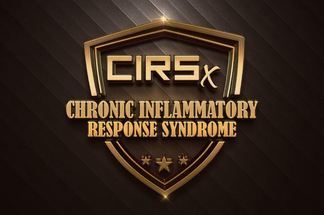Make it Your Season to Thrive: 2 Keys & Great Tips for Living with CIRS

There are apparent consistencies and behaviors among those who thrive with CIRS that differ from those who experience relapse.
Committing to what has been proven to work and diligence in preventing re-exposure will be the difference between success and failure.
It does take diligence and maintenance, but thriving is possible. It can even get easier and less overwhelming when you put systems in place to follow. So, in the long run it’s worth the initial effort it may take.
Here are two key ideas for staying on track with more insight and ease and less struggle and uncertainty. It’s your season to thrive!
KEY #1: Monitor your health markers on a regular basis and when any symptoms first arise.
Depending on a variety of considerations, exposure may be felt immediately, hours or days later. Or with less “sick” water damaged buildings, symptoms may build over time.
1/ Monitoring health markers will include keeping track of symptoms and related activities.
This means you’ll need a good tracking system with a chart.
Tracking is a systematic approach to identify your body’s response to a specific action you have taken. It requires developing a daily awareness of the activities you are engaging in and documenting it in a reliable way. Tracking allows you to identify where the changes in your symptoms are coming from. Subtle changes may go undetected without diligent and systematic documentation.
To recover or to prevent re-exposure, routinely track these areas:
- Symptoms
- Environments entered
- Starting and stopping any medications or supplements
- Diet changes
- Other medical or alternative treatments
2/ Monitoring will include online VCS testing as early as possible.
The Visual Contrast Screening test is available online so you can check at the onset of possible symptoms at your convenience. It’s always better to catch symptoms sooner rather than later. And with your tracking system, it’ll be easier to identify the source.
3/ Run a HERTSMI test on any Water Damaged Buildings in question.
If you find you have symptoms, your tracking chart will help you narrow down where the unsafe environment may be. If possible, run a HERTSMI test on the environment in question.
If it’s not possible, you’ll want to rule out your home and “safe” places (car, work, etc). Which brings us to the next part of the thriving road map…
KEY #TWO: Diligently Maintain A “Safe” Home
Keeping your home mold and biotoxin-free is imperative for staying healthy. Every time someone or something enters the house, there is a chance biotoxins could enter with them.
In order to minimize home contamination, here are a few ideas to systemize things:
1/ Managing what comes into the house:
Grocery items, bags, boxes, clothing, books, furniture, and more can be contaminated if they have been in a WDB. A few examples for managing these items, includes: disposing bags, boxes and packaging before bringing them into the home. Launder clothes and other porous items, and clean all other items.
2/ Be proactive about visitors and monitor family’s whereabouts.
Family members and guests can bring in biotoxins from their clothing, bags, suitcases, backpacks, etc, when they enter the house – especially if they’ve been to a new environment.
Setting up a changing room before entry is one idea that works well.
Or when guests visit, inquire ahead of time if they have had water intrusion damage in their homes. If so, a couple of tips are to have them travel with freshly laundered and bagged up clothes they can change into upon arrival. Also, wash their packed clothing upon arrival and store suitcases until they depart.
3/ Routinely Test and Clean your Home and Car
Maintain a biotoxin free home and vehicle by giving them a thorough, systematic biotoxin cleaning every few months. It’s better to be proactive and stay as healthy as possible rather than let any toxins build up and accumulate.
4/Consider quality Air Filtration units, especially in a “Safe Room”
Good air filtration is revolutionizing remediation and making it more possible than ever for CIRS patients to “breathe easy.” Models are designed to specifically target molds and biotoxins and maintain air quality for CIRS patients. Learn more at AirOasis.com
5. Be sure to have the book “Mold Illness: Surviving and Thriving” within reach.
This wonderful resource is packed with tips and tools from medical and environmental experts, including much of the information in this article. You’ll also find tracking charts and more great references, too.
Featured Resources for Community
The Surviving Mold Gift List
Give the precious gift of CIRS health & support with 10 gifts that keep on giving.
Shoemaker Protocol™ Quick Start:
The 3 initial steps to determine if mold is affecting you One of the most common questions we hear is, “how do I know if I have mold illness?” Rest assured, if you’re asking this question, you’ve come to the right place.
AirOasis The #1 CIRS Spring Cleaning Hack
Specialized air purifiers are revolutionizing deep cleaning, no matter the season. They’re a game changer for remediation purposes, too.
CIRS Spring Cleaning Checklist
Living with CIRS means cleaning and maintenance efforts must be ongoing and up to CIRS-safe standards. Spring is a perfect time to do a thorough examination and cleaning of the entire home and create a schedule for the year ahead.
CIRSX Annual Conference June 5-8, 2025 in Tempe, Arizona!
Early Bird Discount ends March 7!




